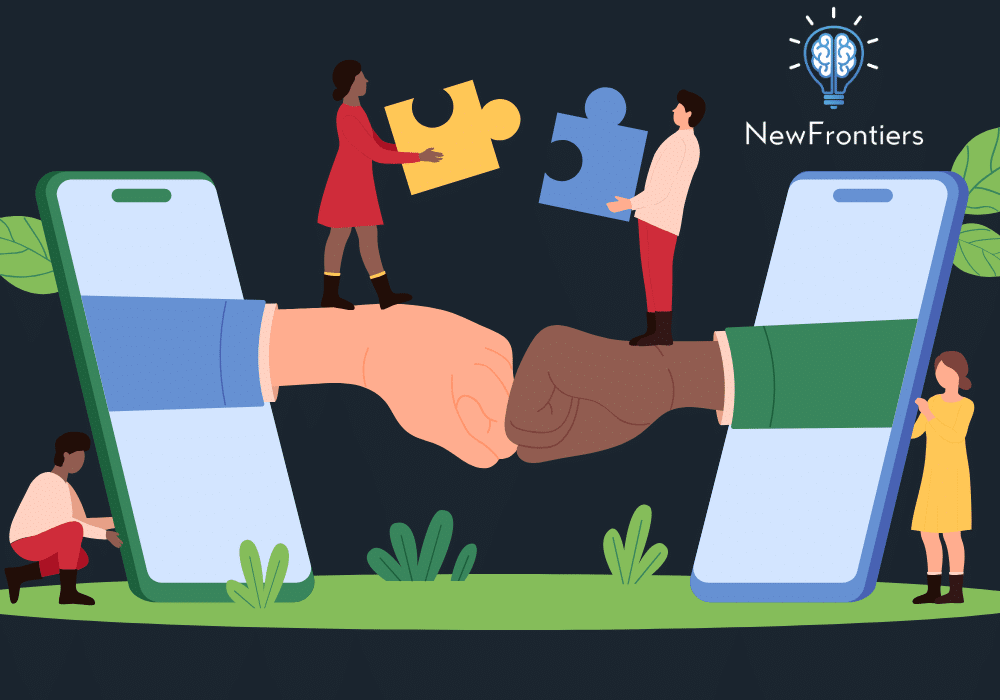
In the digital age, technology has become an integral part of our lives, profoundly impacting various sectors, including education. For students and academics, embracing technology in learning opens up a world of opportunities, enhancing educational experiences and outcomes. This guide explores the significance of integrating technology into learning environments, highlighting its benefits, tools, and strategies for effective implementation.
The Evolution Of Educational Technology
From Blackboards to Digital Classrooms
The evolution of educational technology has dramatically transformed classrooms from traditional settings with blackboards to modern, interactive digital environments. This transition has introduced a variety of tools and resources that enhance teaching methodologies and learning processes. With the integration of devices like tablets and laptops, educational software, and online platforms, teachers can now provide a more engaging and personalized learning experience. These advancements support diverse learning styles, promote collaboration, and offer immediate access to information, thereby reshaping how students learn and interact with educational content.
Benefits Of Technology in Education
Enhancing Learning Experiences
Technology enhances learning experiences by offering personalized learning paths, enabling interactive lessons that captivate students’ attention, and providing access to a vast array of resources beyond traditional textbooks. Interactive software and online platforms facilitate hands-on learning and real-world application of concepts, making education more relatable and engaging for students.
Improving Academic Performance
Technology in education improves academic performance by providing digital tools that offer tailored educational content, enabling teachers to customize learning to meet individual student needs. It also facilitates real-time assessment and feedback, allowing for quick adjustments to teaching strategies and student study habits to better support learning outcomes.
Preparing Students as the Next Generation Workforce
Technology in the classroom equips students with vital skills for the next-generation workforce, such as digital literacy, critical thinking, and collaborative problem-solving. It familiarizes them with the technological tools and platforms prevalent in modern workplaces, fostering adaptability and innovation. This preparation ensures students are ready to navigate and contribute to a rapidly evolving job market.
Innovative Tools and Resources
Educational Apps and Platforms
Educational apps and platforms have significantly transformed classroom learning, providing a range of tools for educators and students alike. Some of the top educational apps and platforms currently used in classrooms include:
- Evernote is renowned for its ability to store, organize, and share notes across all devices, improving communication with parents and students and making classroom resources accessible anytime and anywhere.
- Prodigy Math Game offers a fun and engaging way for students to practice math concepts and skills. It adapts to each student’s level, making it an effective tool for differentiated instruction, while also incorporating game elements to make learning enjoyable.
- Seesaw enables teachers to create digital portfolios for students, where assignments, photos, videos, and other files can be directly uploaded. This platform facilitates meaningful feedback on student work and enhances communication between teachers, students, and families.
- Microsoft Flip (formerly known as Flipgrid) is a video discussion platform that encourages students to express their thoughts and ideas through short videos, fostering a connected learning community. It allows students to respond to each other’s videos in real-time, enhancing interactive learning.
- AhaSlides adds interactivity to existing PowerPoint or Google Slides presentations by allowing students to respond through their devices, making classroom presentations more engaging and participatory.
- The Juice provides daily articles at four different reading levels, covering current events and offering vocabulary and comprehension checks. It’s designed to keep students informed and engaged with the world around them.
- Along is a digital reflection tool aimed at enhancing student-teacher connections through regular check-ins, supporting social-emotional learning by allowing private and secure student responses to prompts shared by teachers.
Virtual and Augmented Reality in Education
Virtual and Augmented Reality (VR/AR) in classrooms enhance learning by creating immersive, hands-on experiences. They make abstract concepts tangible, improve problem-solving through interactive challenges, and speed up learning and retention. VR/AR caters to diverse learning styles, supporting visual, auditory, and kinesthetic learners. These technologies also foster soft skills like collaboration and decision-making by simulating real-world scenarios. For effective classroom integration, educators need to consider appropriate hardware, software, and content that align with curricular goals. The adoption of VR/AR not only engages students in a novel way but also prepares them for a digitally fluent future.
Strategies for Implementing Technology in Learning
Integrating Technology into Curriculum
Teachers can integrate technology into their curriculums through a variety of methods tailored to different classroom setups and access levels to technology. Here are some strategies:
For Classrooms with Interactive Whiteboards and Projectors:
Engage students with interactive websites, use digital note-taking tools like Evernote, and facilitate live discussions using platforms like TodaysMeet. Virtual math manipulatives and screen mirroring technology can enhance interactive learning.
For Classrooms with Access to Laptops or a Computer Lab:
Allow students to work at their own pace with screencasts, e-books, and other digital media. Use student polling tools like Poll Everywhere and Socrative for interactive feedback.
For Classrooms with Mobile Devices:
Create engaging learning experiences using apps for video creation (Animoto), voice recording for group discussions, and subject-specific skills practice. Edmodo and Schoology can be used for uploading course content and fostering collaboration among students.
Advanced Integration for 1:1 Device Classrooms:
Utilize devices as multifunctional tools (e.g., for note-taking, e-book reading). Try Nearpod for projecting information directly onto student devices and engaging them in the lesson content more interactively.
Effective integration involves not just the use of technology, but also ensuring that it enhances teaching and learning. This includes fostering active engagement, participation in groups, frequent interaction and feedback, and connecting learning to real-world experts and scenarios. Shared hardware in schools that are not 1:1 presents its challenges, but strategic planning and setting clear objectives for technology use can mitigate these issues. Establishing a professional-development plan for teachers to improve their comfort and proficiency with technology is also crucial for successful integration.
Training and Support for Educators and Students
Effective technology integration in education requires comprehensive training and support for both educators and administrators. Key strategies include:
- Ensuring educators and administrators understand and are trained in the latest educational technologies.
- Implementing ongoing professional development to keep up with new tech advancements.
- Utilizing shared resources wisely in schools with limited access to individual devices, focusing on clear goals for tech use.
- Tailoring professional development to individual needs for successful tech integration into teaching strategies.
The successful adoption of technology in classrooms depends on continuous learning, strategic planning, and a supportive environment that encourages innovation.
Challenges and Solutions
Addressing Digital Divide and Accessibility Issues
To address the digital divide and enhance accessibility in education, schools and parents can take several effective steps, supported by insights from various sources.
Digital Accessibility and Inclusion
Focusing on making digital materials and platforms accessible for students with disabilities is crucial. Schools should ensure that all digital content is navigable, perceivable, and understandable for every student, including those with physical, visual, auditory, neurological, and cognitive disabilities. This approach not only benefits students with disabilities but enhances learning for all students by implementing universally designed and accessible learning materials.
Leveraging Mobile Technology
Recognizing the widespread use of mobile devices among students, schools can capitalize on this by incorporating educational applications and resources that are accessible on mobile platforms. This approach helps to partially bridge the access gap, as mobile technology often represents the primary means of internet access for students from underserved communities.
Broadband Access and National Initiatives
Governments and educational institutions can work together to improve the affordability and availability of digital resources. National broadband plans, infrastructure development, and public-private partnerships are essential for expanding access to high-quality digital learning tools and internet connectivity.
Digital Skills Training
Equipping teachers and students with the necessary digital skills is paramount. This involves formal training on utilizing the internet and modern technologies effectively for educational purposes. Such initiatives empower users to navigate digital tools proficiently, thereby narrowing the digital divide.
Raising Digital Literacy Awareness
Governments and educational bodies should promote the social and economic benefits of digital literacy, encouraging more individuals to become digitally active.
Support for Learners with Disabilities
Implementing assistive and adaptive technologies in classrooms can significantly improve access to education for learners with disabilities. These technologies ensure that all students, regardless of their physical or cognitive challenges, can participate fully in the learning process.
Addressing Gender Digital Divide
Special attention should be given to reducing the gender digital divide, ensuring equal access to digital tools and resources for both male and female students. This includes making educational content available in various languages to accommodate different linguistic backgrounds.
Embracing technology in education is not just a trend but a necessary evolution to prepare students and academics for the future. By integrating innovative tools and strategies, education can become more accessible, engaging, and effective. As we navigate this digital era, the potential for technology to transform education is limitless.




